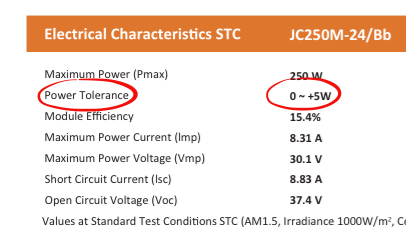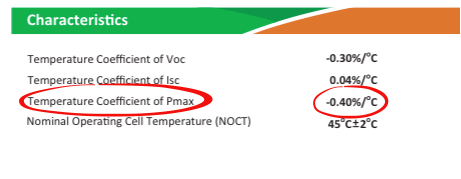Are you getting the best solar panels? The top 10 things to check
By Finn Peacock – Chartered Electrical Engineer, Ex-CSIRO & Founder of SolarQuotes
So, you’re considering getting quotes for solar. Great! Solar systems can be a wonderful investment for many Australians.
But once you’re quoted a set of solar panels, how can you know if they’re good quality?
The answer can be slightly complicated and involves the use of a tier ranking system which costs me $4,000 to access.
The quicker, easier way for you to figure out if your quoted panels are good quality is to ask me using this form (If you’re looking to get a solar system but haven’t yet gotten a quote, you can get three free, no obligation quotes here).
I’ll respond within a few days letting you know what Tier ranking the panel is according to the ranking list I use and whether I’d be happy putting them on my roof – based on my 17 years experience as a Chartered Electrical Engineer.
If you prefer to do your own research, then luckily for you, my philosophy behind SolarQuotes is that prospective solar owners should be able to find all the information they need in order to make an informed decision about solar for free.
So here I’ll explain the essential things you need to look for when assessing solar panel brands, in plain English.
Assessing the quality of a given solar panel requires the use of a spec sheet, which any reputable installer should provide you with when giving you your quotes. If they don’t provide a specifications sheet – show them the door and get another quote!
There is an example spec sheet for a good quality Tier 1 panel here.
If the spec sheet doesn’t provide all the answers, you should call up the installer and ask for the rest of them. If they don’t know the answers, that’s a bad sign.
Now let’s get to it:
The Top Ten Criteria
1) Warranty
One little bit of solar panel puffery that installers love to talk up is the supposed ’25 year power output warranty’. For reasons I’ve outlined in another post, this 25 year warranty could be very hard to claim.
There are other, stronger, warranties that apply to your panels. Look for the ‘manufacturer’s’ warranty or ‘material & workmanship’ warranty. This is typically 10 years, but can be longer on good panels.
On our example spec sheet you can see the warranties here:

I’ve heard horror stories of people who have had faulty panels being told that they need to send the panels back to China at their own expense in order to get them replaced! So make sure your panel manufacturer has an Australian office listed on their website.
You may even want to call the company directly and ask them about their local warranty service.
2) Cost
The typical price you can expect to pay for different sized solar systems can be found here. If you’re quoted substantially less than this for a solar system, read this to make sure that you’re getting a bargain instead of a liability.
If, on the other hand, you’re quoted a lot more than the range I’ve suggested, this either means a) your system is particularly difficult to install, b) you’re getting ripped off or c) it is gold plated. This is why getting 3 quotes is a good way to make sure that you’re not paying more than you should be for a system.
3) Manufacturer
Do a quick google of the manufacturer – Does their website look legitimate? In 2017, failing to have a basic website can be a sign of a shonky manufacturer.
Do they have a specific area on their website that discusses warranties and is there a local office? An honest manufacturer will have this information readily available for any prospective customer to see. Efforts to obfuscate the warranty they provide is a big red flag!
Look at their approvals on both the website and the spec sheet. The ones I like to see are MCS (which is a UK approval that is more stringent that the Aussie one) and TUV which is a German testing house.
Here are the approvals from our example spec sheet. I’ve circled the MCS and TUV badges:
How long have they been in business for?
The solar industry can be quite fast-paced, with companies closing down frequently and new ones springing up all the time. Just because a company is relatively new, it doesn’t necessarily mean that they’re bad.
However, you are taking a risk by trusting a company that has only been around for a few years (or less!) – it’s always better to err on the side of caution and only choose a manufacturer that has been going for at least five years.
Are there any whirlpool forum posts detailing bad experiences?
The whirlpool.com.au forums are my #1 favourite place on the internet to visit for information (both good and bad) about solar companies of all shapes and sizes. This is because they’re generally the first public port of call for an Aussie that has been ripped off or unfairly treated by a shonky company to complain!
Googling the phrase “Whirlpool >manufacturer name<” will usually reveal to you pretty quickly whether they’ve been accused of shady business practices.
Also use the ‘search’ function at the top of this (or any page) on my website. I’ve done the research on many panel brands for you!
4) Panel type
Are the solar panels mono crystalline, poly crystalline, thin film, or some other wacky new technology? I discuss the various different types of solar panels, including the pros and cons of each, here. Make sure you’re happy with the technology that you choose.
5) Solar panel efficiency
Unless your roof is huge, you’ll want a panel efficiency of at least 15% (as the efficiency of a panel is directly correlated with its physical size). Otherwise, you’ll quickly run out of space on your roof, and thus be unable to upgrade your system in the future.
Keep in mind that solar panel efficiency is not correlated with quality – you can get some really high quality panels at the lower end of the efficiency scale.
6) Power tolerance
This is the variation between what your supplier says your panel can output compared to what it actually outputs. For example, a 200W panel with a tolerance of +/- 5W could actually produce anywhere from 195 to 205W.
This is a factor you have to take into account when working out how much power you can expect your panels to provide.
Many solar panels have a “positive only” power tolerance, which means you are guaranteed to get the sticker output (for example, 200W) from the panel and more. For example, a 200W panel with a tolerance of +5W/-0% will produce a minimum of 200W and a maximum of 205W.
Here I’ve highlighted the power tolerance on our example spec sheet:
7) Framing quality
The aluminum frame that goes around the solar panel is a good indicator of the overall quality of the solar panel manufacturer. Look at the corners of the panel frame – Are they clean joins? Are the panels glued (bad), screwed or welded at the corners?
If you’re more aesthetically inclined, you may want to consider looking for a black anodized panel frames – they look damn sexy when mounted in a solar array on a roof (my inner electrical engineer couldn’t help but describe the frames like that).
8) The backsheet
All solar panels have a plastic backsheet glued on their backs in order to protect the solar cells. A thin, flimsy backsheet with signs of coming unstuck is a dead giveaway that the panel is crap.
9) Temperature coefficient
This is especially important in sunny Australia where temperatures can get rather toasty!
The temperature coefficient is a number that describes how well solar panels can handle hot temperatures. ‘Hot’, in this context, is defined as a panel temperature over 25ºC. And note that on a warm day, the panel gets much hotter than the air around it – usually at least 20º hotter.
Temperature coefficient is described in units of “% per ºC”. The lower (in absolute terms) this number is, the better. There may be multiple temperature coefficients on the spec sheet – you are looking for “Temperature Coefficient of Pmax“.
If the number is higher (in absolute terms), it means that on hot days the ability for your panel to produce electricity will go down. It seems counter-intuitive that more sun on your roof means your panels perform worse, but that’s physics for you!
What this all means is that a panel with a high temperature coefficient may be a sign of a crappy panel. A reasonable number is around -0.5%. The highest quality solar panels can have a number around -0.3%, and if a panel has a number around -0.7% – stay away.
As an example, if a panel has a temperature coefficient of -0.5%, this means that every degree over 25ºC, the panel loses 0.5% of its electricity generation. And remember, the panel will be at least 20º hotter than ambient on a sunny day, so, if the ambient temperature is 30ºC, your panel will be 50ºC and only be producing at 75% of its ideal output.
Here is the TC from our example spec sheet. It is -0.4, which is good:
10) Proper Australian Support
This is a really simple check. If you can find the Australian website, ring the Australian number. Does it connect? If it does, then ask the person “I’m thinking of buying panel model can you tell me the temperature coefficient?”. If it is simply a phone number with an answering service, you’ll know straight away. If they have a proper office, you’ll get put through to engineering or technical sales and your question will be answered.
Now that you know all of this, you should feel much more confident assessing a quote that an installer has given you.
If you’re considering installing solar panels for your home or business, SolarQuotes can help you get quotes from high-quality installers quickly and easily:




